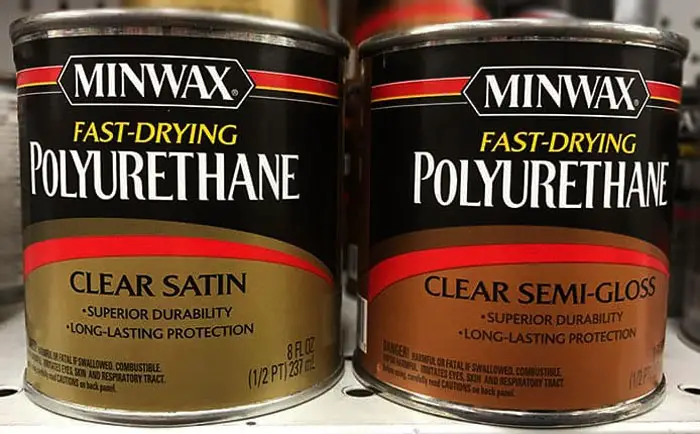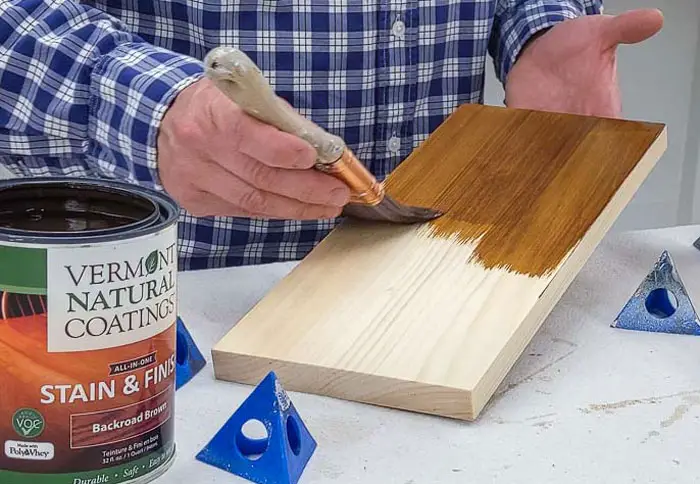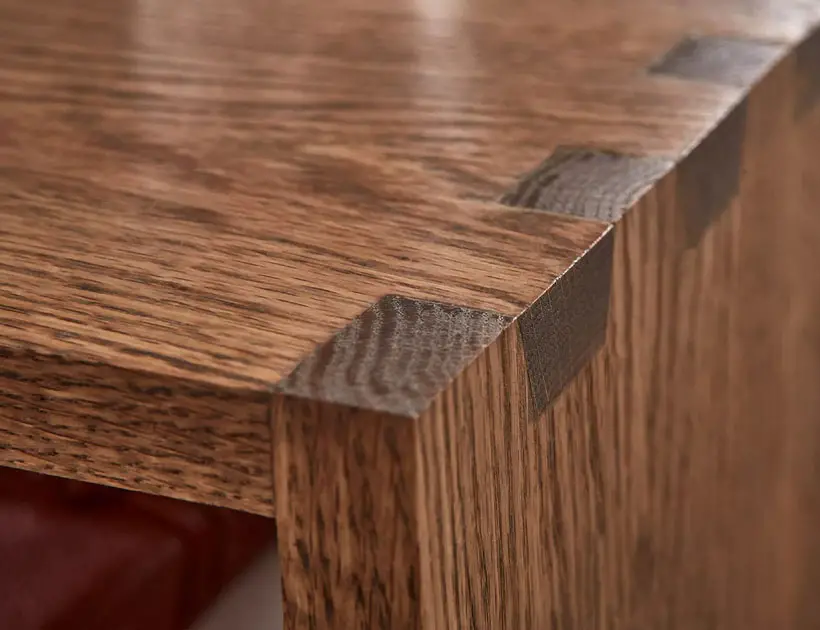Satin Vs Semi Gloss Polyurethane: Choosing the Right Finish
Stain and semi-gloss polyurethane finish are popular options that are frequently sought for the top spot. But surprisingly, most people differentiate these only based on their cost. But this isn’t the only factor that explains the satin vs semi gloss polyurethane differences.
So, what’s the difference between Satin vs Semi gloss polyurethane? Satin and semi-gloss polyurethane differ in their sheen or gloss levels. Semi-gloss has better gloss compared to satin polyurethane.
To truly comprehend the disparities and make an informed decision, consider their distinct characteristics, advantages, and disadvantages. So let’s dive deep into these two popular sheen types and unravel the insights you probably didn’t know.
Satin Vs Semi-Gloss Polyurethane: Key Differences At A Glance
The key difference between semi-gloss and satin polyurethane lies in their respective appearances and the level of sheen they provide.

Here are some common differences between stain and semi-gloss polyurethane:
| Properties | Stain | Semi-Gloss |
|---|---|---|
| Formula | Water-based | Oil-based |
| Sheen level | 40% | 55% |
| Curing-time | Around 2 hours | Around 4 hours |
| Longevity | Good | Better |
| Scratch resistance | Poor | Good |
| Appearance | Dark | Shiny |
| Effect on wood | Doesn’t change the wood color | Change the wood color |
| Maintenance and leaning | Low | Moderate |
| Price | Cheap | Costly |
| Application | Stairs, kitchen tables, and furniture | Kitchen cabinets, railings, and wood trims |
Satin Vs Semi-Gloss Polyurethane: The Differences in Detail
There are several differences between satin and semi-gloss polyurethane. Here are the details:
Formula
While both finishes are based on polyurethane, they’ve variations in their formulation. Satin contains more flattening agents or zinc oxide, which gives it a softer, less glossy appearance.
Semi-gloss has a less flattening agent. Though both contain the same chemical formulation, stains are water-based. But the majority of semi-gloss sheens are oil-based.
Sheen Level
The sheen level refers to the finish’s degree of shine or glossiness. Satin polyurethane has a low level of sheen, offering a subtle, soft glow that isn’t too reflective.
Semi-gloss polyurethane has a high sheen level, providing a more pronounced and shiny appearance.

Curing-Time
Satin polyurethane cures quicker than semi-gloss because of its less sheen and lower oil content. However, because of the higher content of sheen and oil, semi-gloss takes longer to cure.
Longevity
Both of them offer good performance. However, semi-gloss polyurethane has slightly better durability for its higher sheen level.
This makes it more resistant to daily use, such as regular cleaning, foot traffic, and general handling. Satin is still reliable but may require more frequent touch-ups over time.
Scratch Resistance
Satin polyurethane falls slightly behind semi-gloss. The lower enamel level of satin finishes means that scratches and scuffs will be more visible than in semi-gloss.
However, it’s important to note that both semi and satin polyurethane provide a protective barrier against scratches. And they can significantly prolong the life of wood surfaces.
Appearance
The appearance of the two finishes differs significantly. Satin polyurethane creates a softer, more subdued look, adding depth and elegance to wood surfaces.
Conversely, semi-gloss polyurethane offers a shiny finish that reflects light and creates a more vibrant and contemporary look.
Effect on Wood
Satin polyurethane typically doesn’t change the natural color of the wood significantly. It retains the wood’s original hue, allowing its natural beauty to shine through. However, semi-gloss polyurethane alters the color of the wood to a certain extent.
Maintenance and Cleaning
Satin finish hides dust, fingerprints, and minor imperfections better than their glossier counterparts. They’re also less likely to show water spots or streaks, making them easier to maintain.

Semi-gloss, with its more reflective surface, may require more frequent cleaning to keep them looking their best.
Price
The price can vary depending on the brand and quality. Satin finishes are typically considered a more budget-friendly option at only $29 – $42 per gallon.
Semi-gloss polyurethane, with its higher sheen and perceived aesthetic value, tends to come at a slightly higher price. It’ll cost you $33 – $56 per gallon.
Application
Regarding application, satin finish is commonly used on surfaces such as stairs, kitchen tables, interior walls, and furniture.
Semi-Gloss polyurethane is typically applied to kitchen cabinets, wainscots, railings, and wood trims.
Stain Polyurethane: Pros and Cons

Here are some pros and cons of using stain polyurethane:
Pros
- Less sheen content makes the surface less slippery
- It takes only 2 hours to cure
- Volatile Organic Compounds (VOCs) are chemical compounds that release off-gas that causes bad odor. As stain release fewer VOCs, it doesn’t produce a foul odor
- Forms a protective layer that resists stains and spills
- Easy to wipe away dirt, dust, or liquid spills
Cons
- Lack of luster
- Requires multiple coats
- Difficult to repair
Semi-Gloss Polyurethane: Pros and Cons

Here are some advantages and disadvantages of using semi-gloss polyurethane:
Pros
- Durable and able to withstand wear and tear
- Spreads smoothly and evenly
- Highly moisture resistant
- Relatively easy to clean and maintain
- Suitable for interior wood surfaces
Cons
- Tend to highlight imperfections in the wood surface
- To fix scratches, need to remove all the coats
- More slippery than a satin finish
Satin Vs Semi-Gloss Polyurethane: Which One is Better?
Semi-Gloss and satin finishes have advantages and are suitable for different applications. But if you choose one, the decision ultimately depends on the specific application and needs.
Choose Stain Finish When –
- When finishing a living room or master bedroom where highly reflective finishes may be overwhelming
- You want to effectively conceal imperfections, debris, dirt, and footprints on the wood surface
- If you’re sensitive to light and prefer minimal light reflection
- When you’ve children and pets at home prone to denting and scratching wood surfaces
Choose Semi-Gloss When –
- Finishing a kitchen, bathroom, or other humid areas where moisture resistance is important
- If you want a surface that feels sleek and luxurious
- When dealing with a small, poorly lit space
- If you’re working on trim and molding, durability and washability are vital
FAQs
Check out some common questions about satin and semi-gloss finish:
Q. Can you mix semi-gloss and satin together?
Yes, it’s possible to mix semi-gloss and satin paint. However, it’s important to note that the resulting finish may not be ideal. If you combine these two finishes, you’ll get semi-gloss because its sheen level is higher than satin.
Q. Does semi-gloss fade?
No, semi-gloss does not fade. Semi-gloss paint finishes are specifically designed to resist fading and maintain their glossy appearance over time.
Q. Is semi-gloss more water resistant?
Yes, semi-gloss tends to be more water-resistant compared to satin. The higher sheen and smoother surface of semi-gloss paint provide a degree of protection against water and moisture.
Final Verdict
So which one is the winner of this satin vs semi gloss polyurethane battle? Both of them have their own advantages and disadvantages. Satin polyurethane has a low sheen finish, reflecting less light than semi-gloss. This characteristic gives satin a darker and more subdued appearance.
And semi-gloss polyurethane delivers a better sheen and reflects more light, resulting in a shinier finish. The increased reflectivity of semi-gloss polyurethane lends a bright and lustrous appearance to the treated surfaces.
So, the choice is yours.




